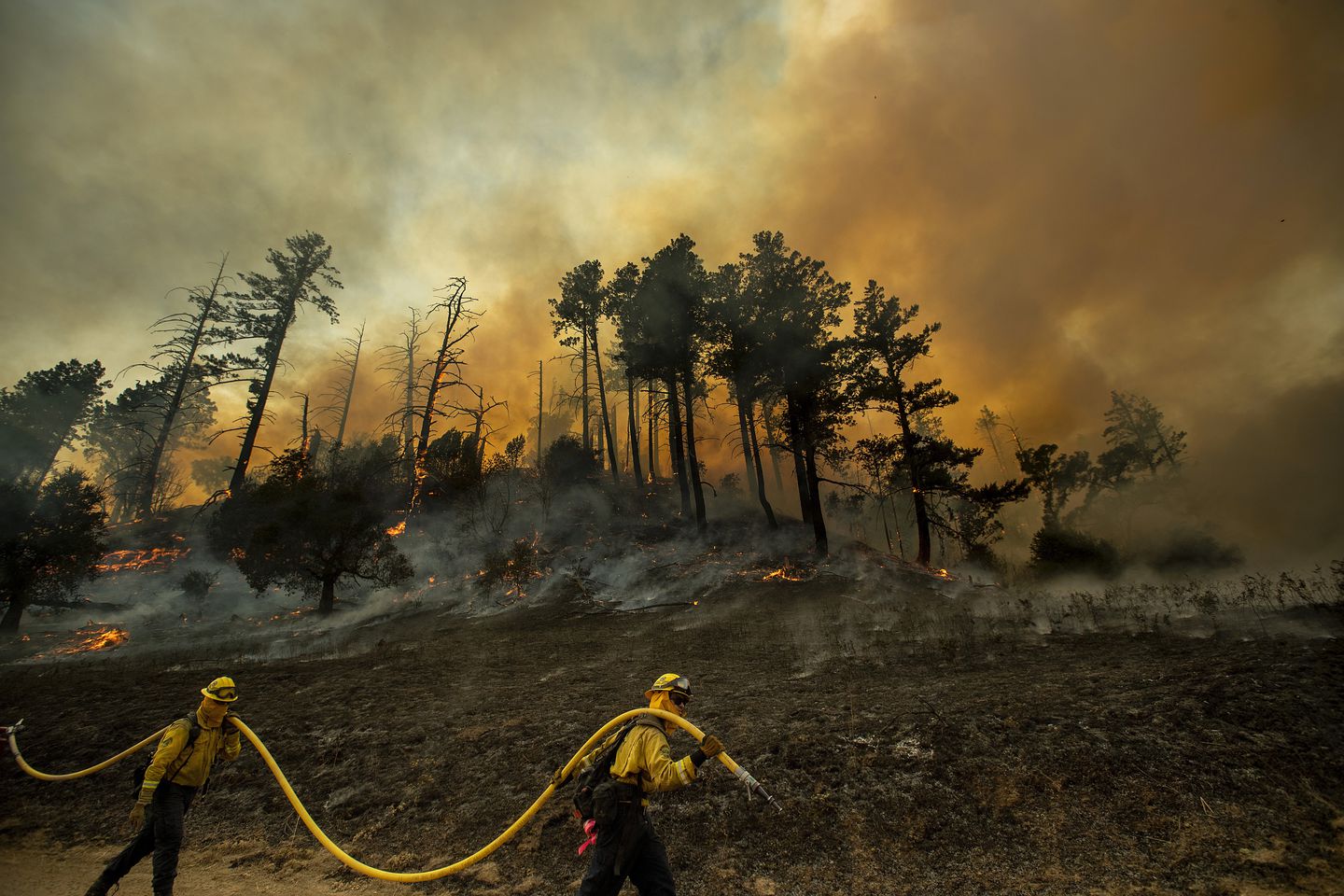The sheriffs office also issued a dire alert telling residents farther north of Santa Rosa to leave.
The wind is really starting to pick up, as is the fire activity. If you are still in this mandatory evacuation area you need to leave now while you still can, the sheriffs office said.
A windstorm was expected to pummel the region throughout the morning, creating historic weather conditions, according to the National Weather Service.
Gusts as high as 80 mph swept through the hills and valleys north of the San Francisco Bay area and could continue until at least the early afternoon. An extremely critical fire weather area, the National Weather Services highest category, has been in effect in several counties north of San Francisco.
The winds are on our doorstep, the service wrote in a tweet Sunday morning.
Forecasters said abnormally low humidity and dry vegetation had created tinderbox conditions, which combined with high winds, were a lot of supportive of extreme fire spread.”Weather Service forecasters predicted winds would peak between 9 a.m. and 3 p.m. local time before weakening some by Sunday late afternoon or evening. They also warned the dry, gusty winds would likely continue through Monday morning.
Early Sunday morning, authorities closed portions of Highway 101, the main north-south thoroughfare through the region, preventing traffic from the north and south from flowing into the hazardous fire area.
The Kincade fire outside Healdsburg, Calif., which had consumed at least 26,000 acres and was only 11 percent contained as of early Sunday appeared to be rapidly intensifying, according to the service, which posted satellite imagery of the blaze.
Kincade Flames from the fire, which was sparked on Wednesday night, could be seen stretching hundreds of feet above the treetops, according to the Fire Weather Research Laboratory at San Jose University.
Officials, residents and emergency workers have spent the weekend bracing for abrupt wind change, which has come on almost exactly as forecasters expected. The fierce gusts, coupled with low humidity, could feed existing fires or ignite new blazes by knocking over electrical equipment or carrying embers into areas the flames haven’t yet touched. Any fires that do crop up will likely spread rapidly, the National Weather Service said.
Concerns about the fire expanding led Pacific Gas
In total, in estimated 940,000 customers, comprising about 2.8 million people, are expected to be without power through the weekend. Pg
The region has already experienced two years of incredibly destructive fires. The 2017 and 2018 seasons California fire brought the deadliest blazes into state history. As residents began to receive warnings of the Kincade fires imminent danger, some experienced uneasy flashbacks to the infernos that decimated parts of northern California wine country two years ago.
The larger, more intense fires are part of a clear pattern, in which blazes are more frequent and longer stretch across the season. And, according to CalFire, climate change is considered a key driver of this trend. Population growth and the increase in homes and businesses located near lands that typically burn are also escalating the risk of and damage from wildfires in the Golden State.
Jason Samenow and Andrew Freedman contributed to this report.
Read more:
Californias new normal: Wildfires, ash and power outages could last a decade
How powerful winds and bone-dry air are sparking a wildfire nightmare in California

Be the first to comment on "Fierce winds sweep across California, worsening wildfires and prompting new evacuations – The Washington Post"